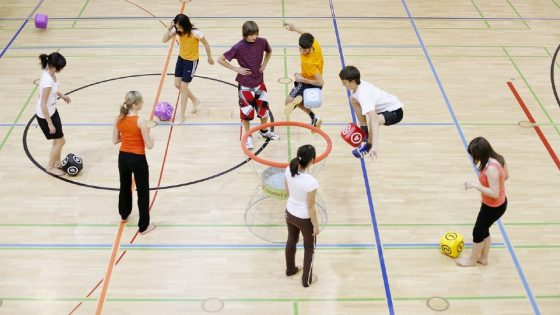Physical education plays a crucial role in the overall development of students. It fosters teamwork, promotes physical fitness, and instills a sense of discipline. For schools, sourcing the right sports equipment is essential to facilitate a comprehensive physical education program. Here are some key considerations to keep in mind…
- Quality and Durability: School sports equipment undergoes frequent and, sometimes, rough use. It is vital to choose equipment made of high-quality materials that can withstand the rigors of school sports activities. Durability ensures that the equipment lasts longer and provides safety to the students using them.
- Age Appropriateness: The sports equipment should be appropriate for the age group of students who will be using it. Smaller-sized equipment may be necessary for younger children, while older students may require full-sized equipment. Moreover, the safety features of the equipment must also align with the age group of the students.
- Variety of Sports: Schools usually offer a range of sports activities such as football, basketball, cricket, athletics, etc. It is essential to ensure that there is a diverse range of equipment available for all the sports offered in the school’s physical education curriculum.
- Budget: While it is crucial to purchase high-quality equipment, it is also necessary to stay within the budget allocated by the school for sports equipment. Compare prices from different suppliers and consider bulk purchasing to get discounts. However, do not compromise on the quality and safety of the equipment for the sake of budget.
- Supplier Reputation: Source the sports equipment from reputable suppliers who are known for providing quality products. Check online reviews, ask for references from other schools, and inquire about the supplier’s experience in providing sports equipment to schools.
- Safety Standards: Safety is of utmost importance when it comes to children. Ensure that the equipment meets the necessary safety standards and certifications. Equipment with sharp edges, loose parts, or those that pose a risk of injury should be avoided.
- Maintenance and Replacement: Consider the maintenance requirements of the equipment. Some equipment may need regular maintenance, while others may have a longer lifespan. Also, inquire about the warranty and replacement policy of the supplier.
- Storage and Portability: Consider the storage requirements of the equipment. Some equipment may need special storage conditions to prevent damage. Additionally, if the equipment needs to be moved frequently, consider its portability.
- Customisation: Some sports equipment may need to be customised with the school’s logo or colours. Check with the supplier if they offer customisation options and at what cost.
- Inclusive Equipment: Consider the needs of all students, including those with physical disabilities. Ensure that the equipment is inclusive and accessible to all students.
By carefully considering these factors, schools can ensure that they source the best sports equipment that not only enhances the physical education experience of the students but also ensures their safety and well-being.
Are you sourcing sports equipment for your school, college or university? The Education Forum can help!
Image by Vlad Vasnetsov from Pixabay




Leave a Reply